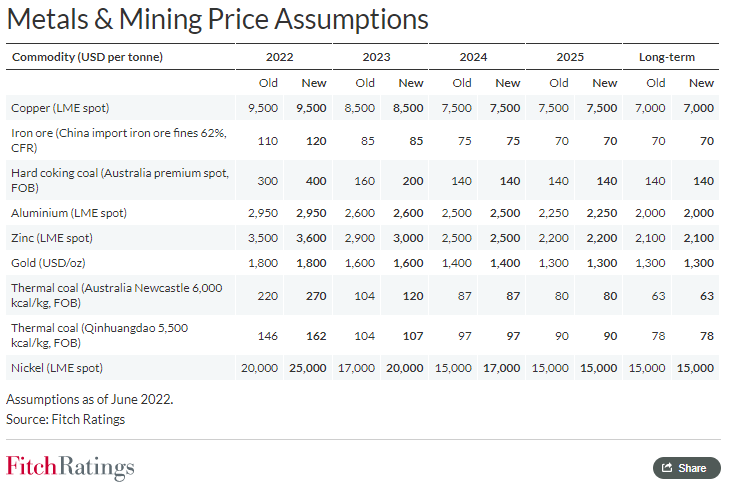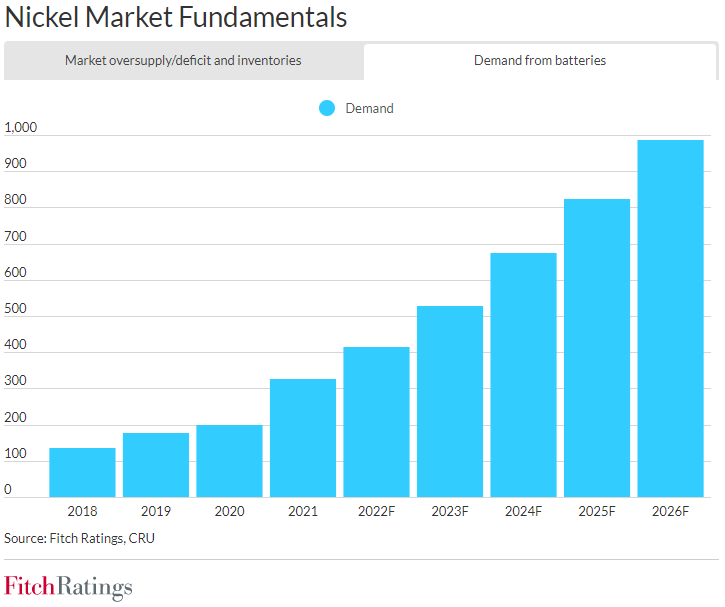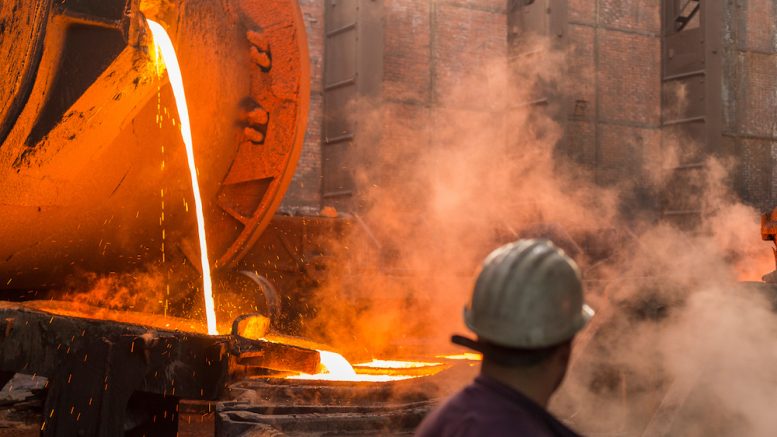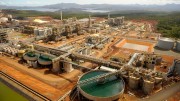Analysts expect historically high prices for copper, aluminum, nickel, zinc, steel, and other base and precious metals to benefit miners in the year’s second half.
Credit rating agency Moody’s Investors Service expects commodity prices to continue to reflect the risk of supply and trade-flow disruptions, especially if the Ukraine military conflict escalates.
Moody’s VP and senior credit officer Emile El Nems says rising energy and freight costs will also support elevated prices, increasing the likelihood of additional production curtailments in Europe, where high energy prices are already straining industrial production and tightening the supply of steel and primary aluminum.
“Even though input costs will rise, including prices for the metallurgical coal, iron ore, and pig iron used in steelmaking, selling prices for steel will continue to exceed historical levels and temper the impact,” said El Nems in a statement to The Northern Miner.
Meanwhile, rival credit rating agency, Fitch Ratings, has increased its near-term price assumptions for iron ore, coking and thermal coal, nickel and zinc, reflecting more robust post-pandemic demand and supply disruptions, mainly from Russia.
It sketched a relatively stable picture for global copper through year-end.
Fitch expects low inventories, increasing demand due to Chinese economic stimulus and eased lockdowns to support copper prices in 2H22.
“Global supply is tight due to disruptions, including escalating social tensions in Peru and water supply issues in Chile. However, we anticipate global production growth later in 2022 to offset disruptions,” it said in recent market commentary.

“We still expect prices to moderate in 2023 as supplies from new mines increase. The market will then remain largely balanced. The energy transition will also drive demand, while medium-term supply growth will moderate,” said the analyst.
Constructive outlook
Fitch Ratings explained why it adjusted higher its medium-term price expectations.
In the case of iron ore, its 2022 price outlook reflects the high average year-to-date price of US$140 per tonne. It expects the price to moderate.
The Ukraine-Russia war and seasonally lower Brazilian and Australian shipments – two key supply concerns – have also supported prices, despite lower steel production in China year-on-year due to policy requirements and lower demand.
Although lockdowns are easing, construction activities are slow to resume, and manufacturing companies are hesitating to re-open due to fear of new infections, says the analyst.
“While the government is committed to stimulus and monetary policy easing, there has not yet been a recovery in steel demand. There could be some price upside if steel consumption revives early in 2H22. Low-cost iron ore supply should move the market into surplus in two-to-three years,” said Fitch Ratings.
Record pricing in the year has also prompted a higher coking coal price assumption for 2022 to 2023 due to disrupted supplies from Australia and Russia. Prices eased in the second quarter once some exports recovered,” the analyst observed.
Fitch Ratings expects Russian seaborne supply to remain below pre-war levels, with market analyst CRU estimating a reduction of 20 million tonnes this year and a further six million tonnes in 2023 before some recovery. “We expect long-term global demand to fall on lower Chinese consumption, offsetting growth in other regions,” said Fitch.
Fitch Ratings increased thermal coal assumptions for 2022 to 2023 reflect high year-to-date prices, supported by tight supply due to the Australian wet season, strong Indian demand mitigating lower demand in China, and structurally higher prices of Newcastle 6,000.
However, Australian supplies are expected to recover eventually, while India and China have increased imports from Russia, helping meet recovering Chinese demand.
Meanwhile, according to Fitch, the analyst’s improving view on nickel assumption reflects solid year-to-date pricing. Low inventories, disruptions at Norilsk Nickel (US-OTC: NILSY) and Vale (NYSE: VALE), sanctions fears, stronger-than-expected battery-driven demand, and a speculative rally in March have rebased short- and medium-term prices.

“We have raised assumptions for 2023-2024 as inventories, while normalizing, will remain below historical levels, while demand from stainless steel and EV increases. However, Indonesian supply additions will leave the market oversupplied, although fast-growing EV demand represents some upside,” said the analyst.
The increased zinc assumptions for 2022-2023 reflect smelter disruptions due to high energy costs, partially offset by a modest decline in demand in China and muted global demand. Supply is price-elastic and highly fragmented, which should spur smelter restarts once energy prices stabilize at lower levels.
Fitch Ratings’ price assumption for aluminum remains unchanged. Market prices have fallen from high levels, reflecting weaker sentiment, but increased energy costs and low inventories are expected to support prices in 2022.
Automakers in China have re-started production as lock-downs ease, with some extra shifts to fulfil strong electric vehicle demand. Slowing GDP growth, higher inflation and early restarts at Chinese smelters will reduce the global deficit to 0.7 million tonnes in 2022 from the 2.25 million tonnes forecast by CRU in February.
“We expect a broadly balanced market in 2023 to 2025, potentially going into surplus from 2026,” said Fitch.
Gold also remained unchanged, reflecting its ‘safe haven’ investment status amid the Russia-Ukraine conflict and rising inflationary pressures. “Gold prices should eventually moderate on reduced geopolitical risks and as the cycle of rising interest rates continues, increasing the opportunity cost of holding gold.,’ said Fitch.





Be the first to comment on "Post-pandemic demand, Russia-driven supply troubles buoy copper price outlook"